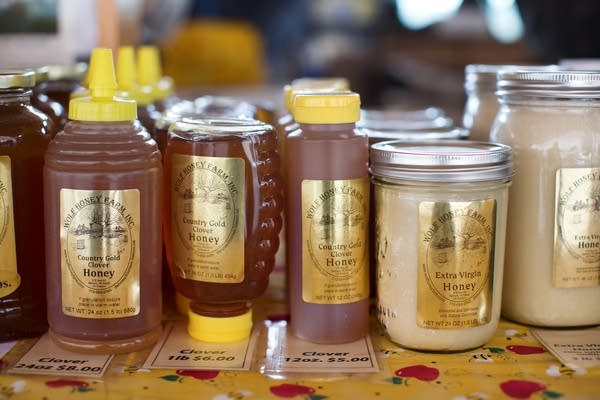Appetites: Sweet yet surprising honey

Honey for sale at at the winter farmers market in downtown St. Paul, March 1, 2014.
Jennifer Simonson | MPR News 2014
Go Deeper.
Create an account or log in to save stories.
Like this?
Thanks for liking this story! We have added it to a list of your favorite stories.


